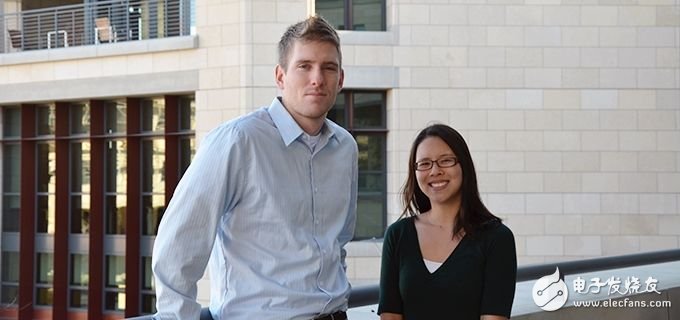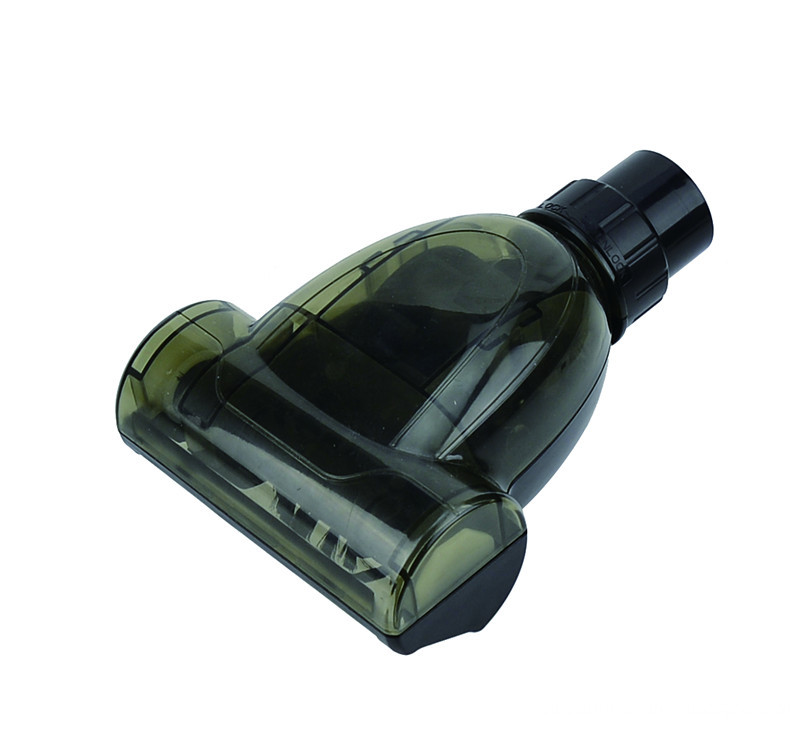Interpretation of drone dodge: machine learning makes me beat the fencing master
Last month, a video of a Stanford drone escaping fencing was red-hot, and IEEE Spectrum wanted to interview its developer Ross Allen. Ross said no problem, but I was recently overwhelmed by the doctoral thesis. Today, Ross has been successfully promoted to Dr. Allen and has answered questions about drones and fencing.
If you haven't seen it before, be sure to click on the link to see this video. Is the fencing really handsome? More handsomely, this is the first time we have seen the real-time dynamic motion path planning of the UAV system in an obstacle environment. Dr. Allen and colleague Marco Pavone of the Stanford Automation Systems Laboratory recently published a paper on the project. Dr. Allen explains this sci-fi technology in a very plain language:
"We can imagine a labyrinth, similar to the one you might have played as a child, using a pen to draw a labyrinth on paper. The labyrinth is solving a basic path planning problem: in a barrier environment (the labyrinth wall), Navigate for a point (for your nib) and let it reach a target point (the exit of the maze). If it is a 3D maze, then the problem becomes more complicated. Give you an example: move the piano into one In a crowded apartment, be careful not to let the piano hit the wall or the furniture is broken. You can plan a moving route in advance, and you may need to make changes such as turning and playing, and finally you can move the piano into the room.
Now, let's make this problem a bit more complicated. Imagine now that you have to drive through the city now. Of course, there are houses, cars and pedestrians in the city. You must arrive at your destination with the shortest possible route. This is more restrictive than carrying the piano, because I can't drive the car across the road, and I have to drive according to the lane and traffic rules, for example, I can't drift on the road. In addition, if you want to stop when driving, I have to step on the brakes first, and it takes a certain amount of time to stop. If you turn too fast when you turn, the car will slip out of control. Now you can understand that reaching the destination through the obstacle environment is a matter of planning. Now, there are some extra rules that limit the way the robot moves. We refer to these rules as “dynamic motion†limits (some of which are kinematic constraints such as turning; others are dynamic limits, such as deceleration braking.) When we face this problem, we call It is a 'dynamic motion path planning problem'.
Our research is to develop a framework to solve problems like this, which can greatly reduce the amount of computation required to operate the robot. We presented the framework in a four-wing drone system in a troubled indoor environment. It can be said that this is the first real-time planning demonstration of the UAV system on behalf of the dynamic motion system.

Dr. Ross Allen (left) and colleagues. Image source: Stanford University.
The videos that have received a lot of attention on the Internet have not yet shown the complete form of our research, but that video makes it possible to see the possibilities of technology at a glance. This video shows more technical capabilities, the drone wants to bypass a wall, but I blocked its way. It keeps recalculating the path and finally calculates that the best path is from the other side of the wall, and then it flies away from me. "
This example exemplifies the application of "dynamic motion path planning" on drones, but this research is not just for drones, it can be applied to any system you want to use. Dr. Allen said that areas such as shipping and logistics infrastructure can also benefit from this technology:
“You can imagine an automated freight ship that traverses a busy port and parks in its own location, then has an automated crane that safely unloads the container onto an automated truck for land transport. Every in this infrastructure The steps are faced with different path planning problems (cargo ships need to avoid other ships, cranes hanging large containers can not collide with other containers on the dock, trucks must drive on busy urban roads), but each different problem Can be solved with the same framework. Just customize the framework according to the specific application scenario (as if we have set up for the drone system)."
Of course, you can also use it for delivery drones and camera drones. Dr. Allen said: "I believe that the delivery drone is an application that can be carried out immediately, which will have a great impact on consumers' shopping behavior. The control and planning of the cargo drone is just one of many problems that need to be faced. Other issues include detection and policy. "This is a big problem. But in the top scientific research field, it is still very fresh to hear such an optimistic attitude.
Dr. Allen said that he would later explore "job opportunities or research positions in the fields of autos, drones, rockets, etc." We guess he will go to the rocket. However, there is still a lot of space for exploration in the field of research. For example, if you throw a lot of drones into the air and let them work together to plan the route, you don't need a dynamic tracking system to command.
Finally, the IEEE interview asked Dr. Allen that there are countless people on the Internet who have unclear truths. Why does this Stanford doctor want to fight with drones, do you want to explain:
"First of all, I am not defeating the wicked Terminator robot. Although we use machine learning in our research, it is to accomplish some routine tasks that sound boring, such as 'accessibility testing'. We have not used machine learning. Train robot warriors and engage in drones to fight clubs. If we didn't give it a smarter algorithm, our robots couldn't be smarter. In other words, the machines were automated, but they didn't learn how to do it themselves. Become more automated."
Here, you are relieved.
This brush is Small Turbo Brush. It's a specil Vacuum Cleaner brush. It's a good helper of acarus killing,so it will give you a safe and clean environment. It's mainly made up of multi-function soft brush,colorful pneumatic brush body,transparency cover and rotation type brushing fur. It's also a vacuum cleaner brush with six functions. First,automatic compensation function into the wind that will let rolling brush always run. Second,unique and simple structure, tear open outfit clean is very convenient. Third,high efficiency of dust collection and super silent. Fourth,deep cleaning and professional in addition to mites. Fifth,modelling is novel and beautiful. The last one is its new function that is rotating transformation multifunctional suction brush. This is really a very useful and beautiful vacuum cleaner brush,hope you will like it. Now let's see picture blow.

Small Turbo Brush
Small Turbo Brush, Turbo Brush, Vacuum Turbo Brush
Ningbo ChinaClean Household Appliances Manufacture Co., Ltd. , https://www.chinaclean-elec.com
